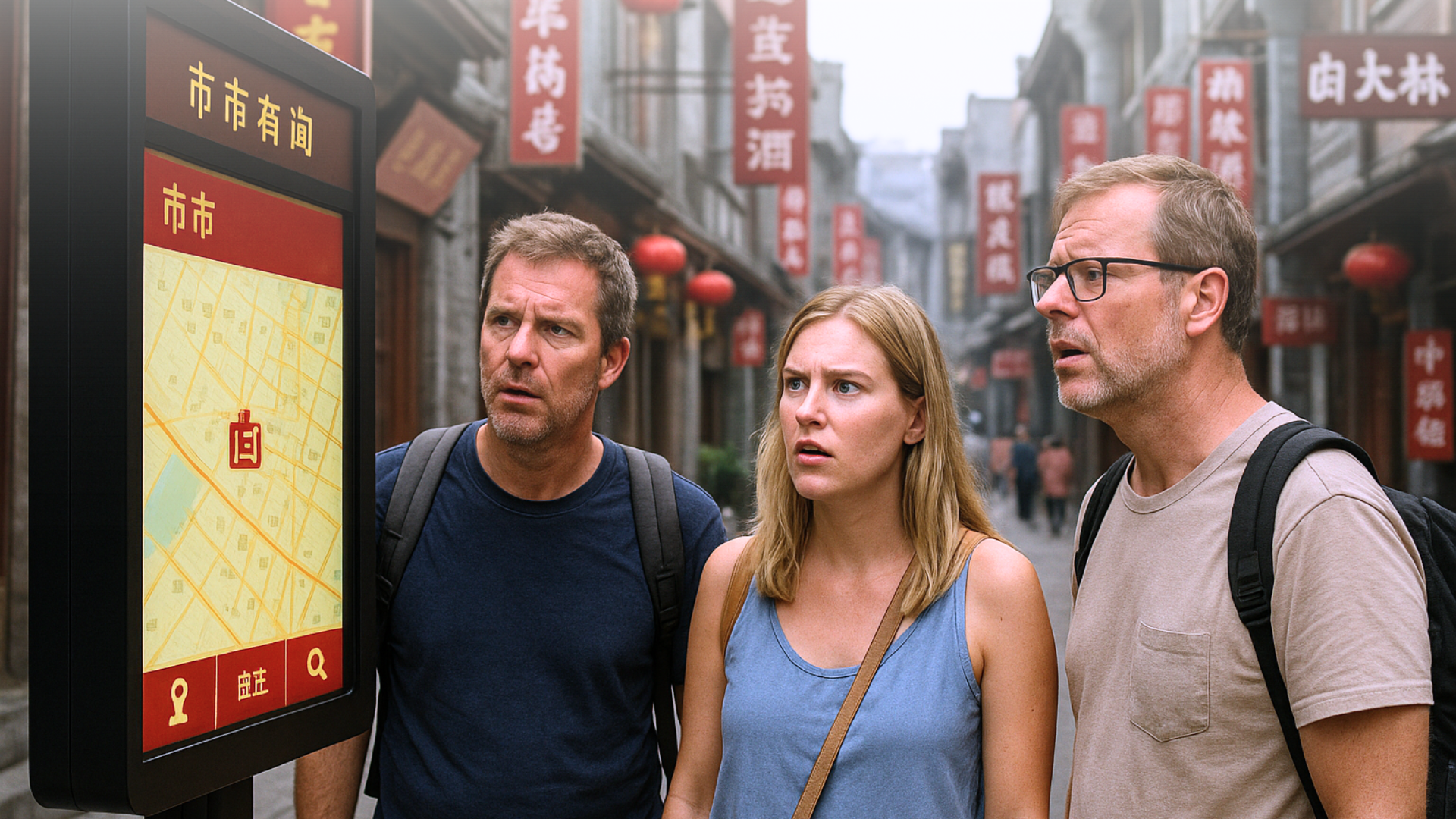
Accessibility as a Priority in Digital Communication
In recent years, accessibility has become a central topic for both public institutions and private companies. According to the World Health Organization, more than 1 billion people worldwide live with some form of disability. Ensuring equal access to information is not only an ethical duty but also an opportunity to improve the overall user experience.
In this context, accessible digital signage is an innovative way to make communication clearer, more immediate and truly inclusive.
What Accessible Digital Signage Means
Digital signage uses screens and multimedia totems to share dynamic content. When designed with accessibility in mind, it becomes a channel that breaks down communication barriers:
👀 Visual support: high-contrast text, clear icons, captions for video content.
🔈 Audio support: voice messages synchronized with visuals, helpful for people with visual impairments.
🌎 Multilingual content: translations to include international audiences and tourists.
✅ Simplified interactivity: guided touch paths and intuitive functions for people with cognitive difficulties.
These inclusive design features not only improve access to information but also strengthen the image of the organization adopting them.
Opportunities for Public Administration
For public administrations, adopting accessible digital signage means:
‣ Better citizen services: real-time, always-available information.
‣ Regulatory compliance: meeting EU digital accessibility requirements (such as Directive 2016/2102).
‣ Transparency and inclusion: clear, accessible communication builds trust.
‣ Cost optimization: one multichannel tool integrating text, images, audio, and multiple languages reduces the need for paper materials and separate translations.
This makes digital signage not just a technology but a partner in making public services more inclusive and efficient.
Real-World Examples of Digital Accessibility
Accessible digital communication extends far beyond public administrations. Many municipalities have already introduced solutions that simplify access to online services and improve orientation in public offices, showing how inclusion directly improves relationships with citizens. Hospitals, universities and cultural institutions are also investing in accessible tools to make information about routes, schedules or events easier to understand.
In railway stations, for example, multimedia kiosks that combine visual and audio messages reduce stress for travelers with hearing or visual impairments. Museums use multilingual displays to break down language barriers and involve international audiences. In tourism, airports, hotels, and visitor centers adopt solutions that combine interactive maps, guided paths and multilingual information to ensure a smoother, more inclusive experience. For tourist destinations, making information accessible means not only respecting travelers’ rights but also strengthening the attractiveness of the territory on a global scale.
Accessible Digital Signage with Livesignage
Platforms such as Livesignage make it easy to implement inclusive content at scale. Subtitles and high-contrast text can be integrated quickly, while multilingual voice messages can be managed centrally. Every screen becomes a tool to reach people more effectively, supported by an intuitive interface that enables real-time scheduling and updates. This reduces management time and increases the overall efficiency of communication.
Why Investing in Accessibility Matters
Accessible digital signage has a direct impact on service quality:
‣ Citizens and users get clearer, immediate information.
‣ Public institutions reduce misunderstandings and the need for additional assistance.
‣ Centralized updates cut costs tied to printing and translations.
Accessibility is not just an ethical choice: it’s a smart investment in efficiency and trust.
Inclusive Digital Signage and Smart Cities
Accessible signage is also a step toward smart city ecosystems. Inclusive panels, interactive kiosks and multilingual signage improve mobility, reduce waiting times and create public spaces that work for everyone.
For governments and organizations, this means not just compliance, but a chance to design cities that are more livable, modern, and people-centric.
Making information accessible is both a challenge and a responsibility. With digital signage, we can remove barriers, empower inclusion, and create environments where no one is left out.
Technology doesn’t replace human care: it amplifies it. Choosing inclusive digital signage means building a fairer, smarter, and more connected society.
